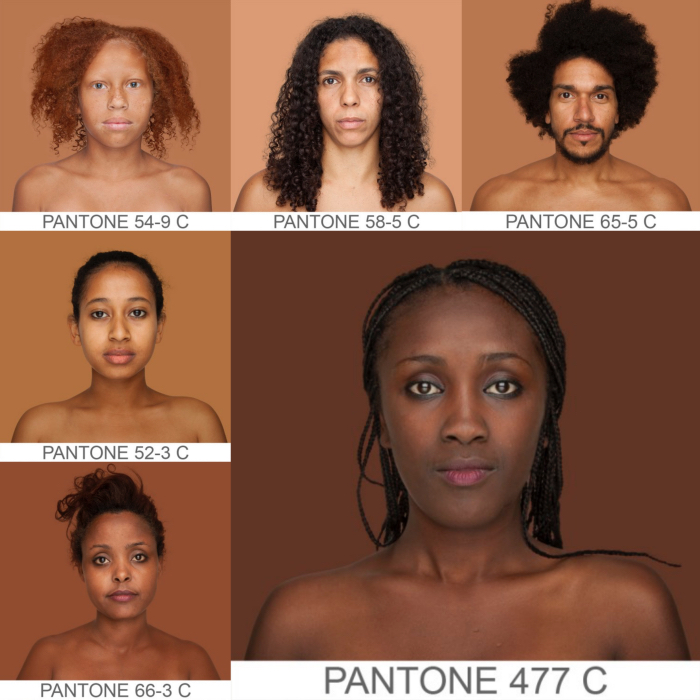
Angelica Dass is a Brazilian artist who uses photography “as a dialogue from personal to global; like a game in which the personal and social codes are put at stake to be reinvented, a continuous flow between the photographer and the photographed, a bridge between masks and identities.” Much of her work focuses on the universality of the human experience.
In her ongoing project humanæ, Dass use the Pantone color system as the backdrop to her portraits, in order to blur the lines between races, and present people with different skin tones in a manner that is devoid of hierarchy. After photographing each subject, Dass meticulously pairs an their skin tone with a corresponding Pantone shade.
The process followed in Humanæ also is rigorous and systematic: the background for each portrait is tinted with a color tone identical to a sample of 11 x 11 pixels taken from the face of the photographed. Aligned as in the famous samples, its horizontality is not only formal also is ethical.
Thus, without fuss, with the extraordinary simplicity of this semantic metaphor, the artist makes an “innocent” displacement of the socio-political context of the racial problem to a safe medium, the guides, where the primary colors have exactly the same importance that the mixed ones. It even dilutes the figure of power that usually the photographer holds. The use of codes and visual materials belonging to the imagery that we all share, leaves in the background the self-referentiality of the artist, insistent and often tiresome.
Dass describes the project as ongoing until she has photographed all of the people in the world.
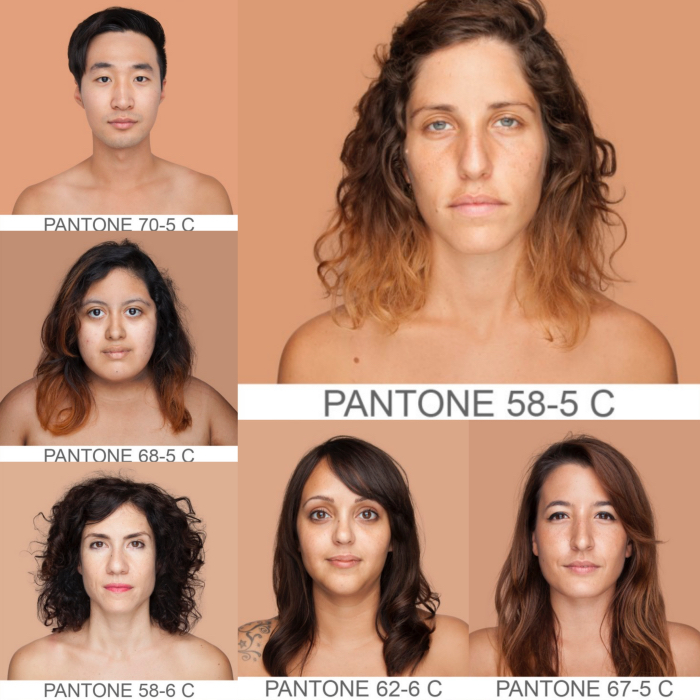
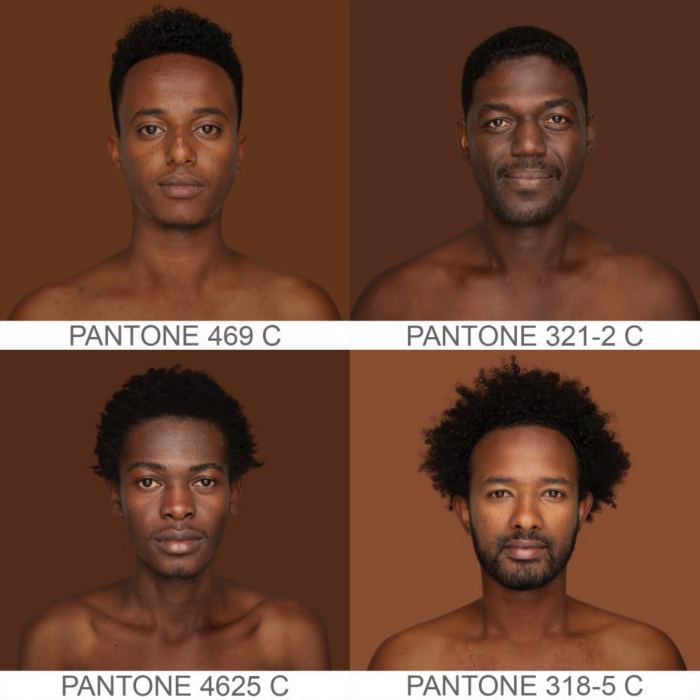

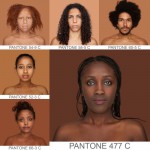
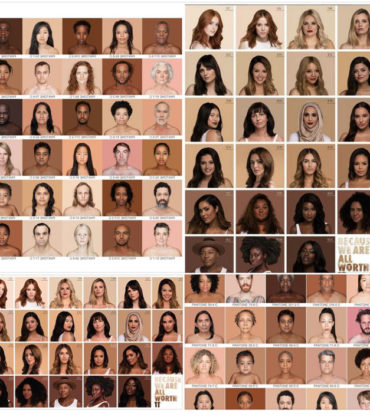
[…] the campaign looked a bit familiar. The series of ads was clearly inspired by her ongoing “Humanæ” […]